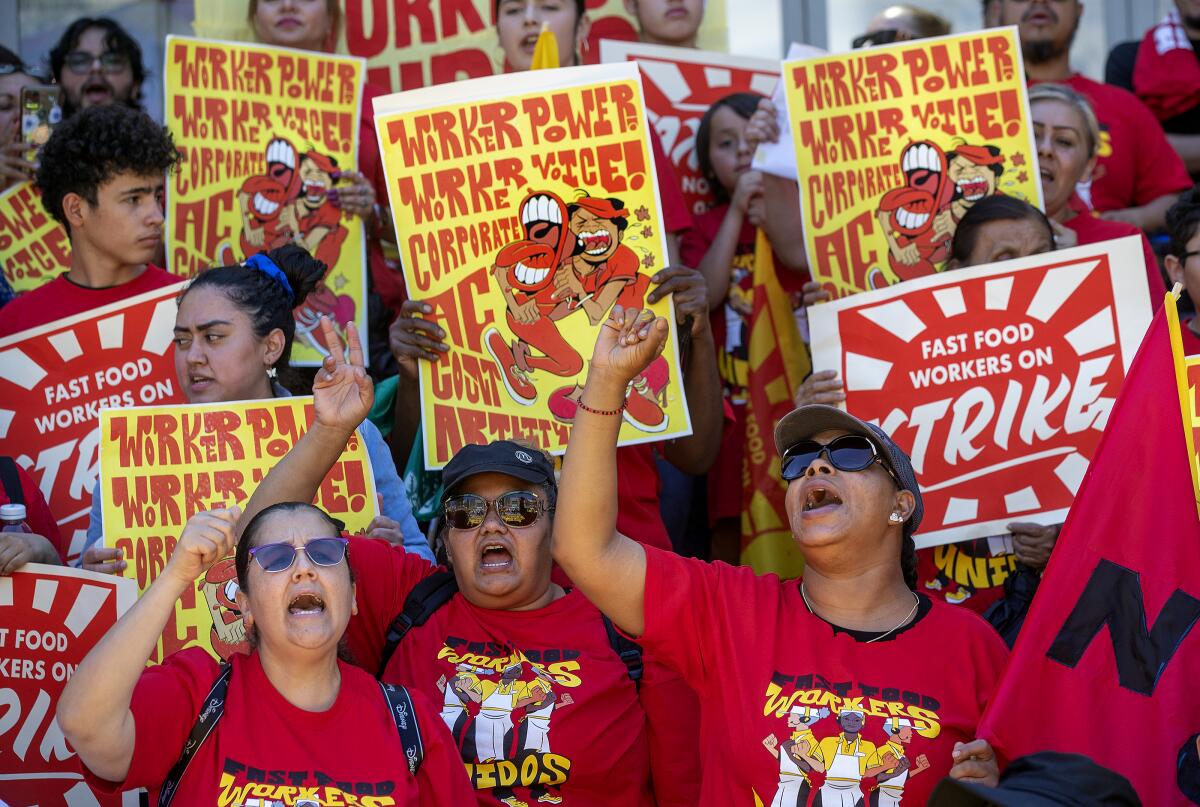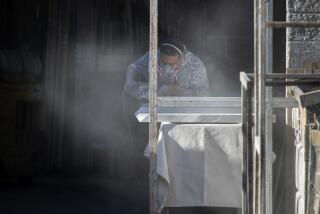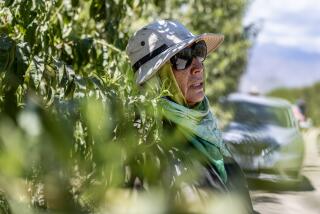State board approves protections for hot workplaces

- Share via
Relief is on the horizon for California fast-food workers operating hot kitchen appliances, logistics workers in vast inland warehouses that lack cooling equipment and others laboring in hot indoor settings as a state agency Thursday approved new workplace protections against excessive heat.
A standards board at the California Division of Occupational Safety and Health voted unanimously to adopt safety measures that require employers to provide cooling areas and monitor workers for signs of heat illness when indoor workplace temperatures reach or surpass 82 degrees.
If temperatures climb to 87 degrees, or workers have to work near hot equipment, employers must take additional safety precautions by cooling the worksite, allocating more breaks, rotating out workers or making other adjustments.
Such guidelines are badly needed, experts say. The planet experienced its hottest year on record in 2023, and temperatures are expected to continue to rise in the years ahead, primarily due to climate change driven by fossil fuel emissions.
The new rules still must undergo a procedural legal review. If that review process is expedited the new rules could be in effect by late July or early August. Otherwise, they are likely to be in place by October.
“The road to get to the vote today has been long, but we hope there are no further delays and employees and employers are informed of these new protections before summer’s end,” said Tim Shadix, legal director for the Warehouse Worker Resource Center, in a statement. “As we experience more extreme heat and longer and hotter summers, especially in the Inland Empire, it is absolutely essential that employers do more to prevent heat illness, including cooling work areas and providing for water and rest.”
Thursday’s vote marked the end of more than five years of delays in the effort to strengthen the state’s requirements for indoor working conditions. Most recently, a scheduled vote on the rules in March was canceled after finance officials from Gov. Gavin Newsom’s administration raised last-minute concerns about the costs California prisons and other public entities would incur trying to adhere to the new rules.
In light of those concerns, the rules were amended to exclude state and local correctional facilities.
During a public comment period before the board voted, several people urged the board to pass the long-awaited measure. AnaStacia Nicol Wright, a policy manager at Worksafe, voiced concern about the decision to exclude correctional facilities, which employ tens of thousands of people in “archaic buildings with little protection from temperatures.”
Wright pressed the board to move swiftly to put approve separate protections for correctional staff and incarcerated workers.
In 2006, California became the first state in the nation to implement heat standards for outdoor work, requiring employers to provide access to shade and water, and cool-down rests when workers need them. In high heat conditions, defined as temperatures of 95 degrees or higher, employers are required to remind workers of safe practices, encourage breaks and drinking water, and observe them for signs or symptoms of heat illness.
In 2016, the California Legislature turned its attention to indoor conditions, directing Cal/OSHA to develop an indoor heat standard by 2019. The agency drafted a proposal mirroring the state regulations that protect outdoor workers, but the rule-making process moved slowly, blowing the 2019 deadline.
A study of the proposed rules that state law required be done by the Department of Finance, for example, was slowed when two contractors were hired to complete the same assessment — extending the process by at least a year and a half, according to a CalMatters report examining the delays.
Thursday’s vote came against the backdrop of recent shake-ups on the board that approved the rules.
Earlier this month, the Newsom administration removed worker safety expert Laura Stock and demoted David Thomas from his position as chair of the board after they criticized the 11th-hour decision to delay the vote in March.
California Labor Federation chief Lorena Gonzalez criticized the move, saying neither she nor other labor leaders had been consulted in advance.
“Obviously, we are disappointed. We think it’s a big loss for the board,” Gonzalez said. “We hope it’s not retribution for standing up for workers on heat standards.”
In recent years, as the state has experienced record-breaking heat waves, cooks, warehouse workers and delivery drivers have repeatedly raised concerns about high temperatures.
Victor Ramirez, who has worked in various warehouses in the Inland Empire over the last two decades, most recently at a facility in Fontana operated by Menasha Packaging, said many of the warehouses he’s worked in did not have air conditioning or fans. In recent years, fans and air conditioning have become more common, but they “aren’t very effective and those warehouses still feel hot,” he said.
“We need this rule in place right now. Workers need protections, they need training so they know the dangers of the job and working in heat,” Ramirez said. “It’s a basic right to work in a safe environment.”
More to Read
Inside the business of entertainment
The Wide Shot brings you news, analysis and insights on everything from streaming wars to production — and what it all means for the future.
You may occasionally receive promotional content from the Los Angeles Times.











